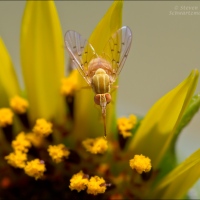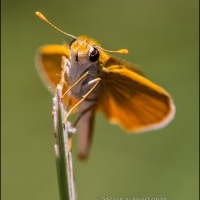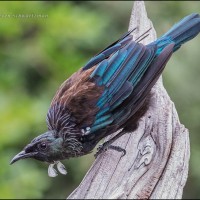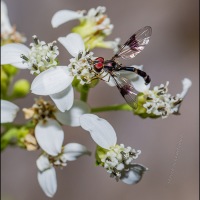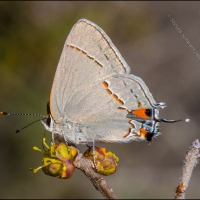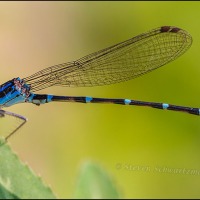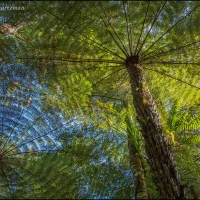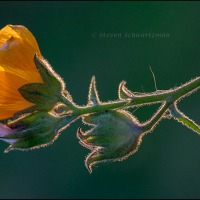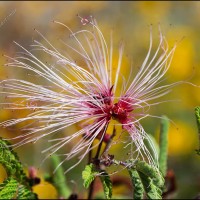Posts Tagged ‘reflection’
Channeling
At the Riata Trace Pond on December 17th I channeled my inner Escher, with the yellow coming from the fallen leaves of a black willow tree, Salix nigra, rather than a goldfish. (To tell the truth, I have occasionally seen goldfish at the opposite end of this pond, but because goldfish are native to China rather than America, I haven’t photographed them. In fact Wikipedia notes that “goldfish released into the wild have become an invasive pest in parts of North America.” Too bad, because they look pretty.)
☙
☙ ☙ ☙
☙
“The High Cost of Self-Censorship on Campus: Self-censorship greatly
diminishes the joys and satisfactions of teaching and learning,” by Andrew Hartz
© 2024 Steven Schwartzman
Two autumn views of bald cypress trees
I’m still not sure if we’d ever been to Guadalupe River State Park before our December 6th visit. In any case, one reason people go there is the bald cypress trees, Taxodium distichum, prettily lining sections of the river’s banks. The trees’ bold broad roots and their reflections in the water have called out to many a nature photographer, including me. On our way back to Austin we stopped briefly at Blanco State Park, where I found a bald cypress along the Blanco River turning richer colors than the ones along the Guadalupe River.
§
§ §
§
Yesterday I linked to a 48-minute discussion between black professors Glenn Loury and John McWhorter titled “The Truth About George Floyd’s Death.” In it they tell how the movie “The Fall of Minneapolis” flabbergasted them by revealing facts about the traumatic events of 2020 that they’d been unaware of and that disproved the widely propagated narrative about those events. You can watch that eye-opening 102-minute documentary for free.
© 2023 Steven Schwartzman
Day for night
Hidden from view along the west side of US 183 in Cedar Park, an adjacent suburb to Austin’s north, sits a little pond fringed by cattails (Typha sp.) and some black willow trees (Salix nigra). Two mornings ago I went there and ended up practicing the technique that cinematographers call day for night, which amounts to underexposing a daylight scene to make it appear nighttime. Here you see the result of underexposing by 3 f/stops, which I actually did to keep the reflected sun from overexposing. Anyone could be forgiven for imagining the view shows a full moon’s nighttime reflection.
☙
☙ ☙
☙ ☙ ☙
☙ ☙
☙
Following up on yesterday’s commentary, here’s more from
93-year-old Thomas Sowell‘s new book Social Justice Fallacies.
“That different people have different beliefs is hardly unusual in the history of human beings. What is unusual— and dangerous— is (1) the extent to which such beliefs prevail without being subjected to tests of either facts or logic, and (2) the extent to which people who present empirical evidence counter to prevailing beliefs are met with ad hominem denunciations and with efforts to suppress their evidence, by means ranging from censorship to violence, especially on academic campuses.”
© 2023 Steven Schwartzman
American white water lily and its reflection
Nymphaea odorata at the Lady Bird Johnson Wildflower Center on September 8th.
✦
✦ ✦ ✦
✦
An unspoken truth of the climate-change crusade is this: Anything the U.S. does to reduce emissions won’t matter much to global temperatures. U.S. cuts will be swamped by the increases in India, Africa and especially China. Look no further than China’s boom in new coal-fired electricity.
Under the nonbinding 2015 Paris climate agreement, China can increase its emissions until 2030. And is it ever. Between 2015 and 2021 China’s emissions increased by some 11%, according to the Climate Action Tracker, which evaluates nationally determined contributions under the Paris agreement. The U.S. has reduced its emissions by some 6% between 2015 and 2021. Beijing made minimal new commitments at last year’s Glasgow confab on climate, despite world pressure.
That’s the beginning of a September 12th Wall Street Journal editorial whose subhead is “Beijing is building more coal-fired capacity than the rest of the world combined, U.S. climate lectures notwithstanding.” Did you catch the third word in the second quoted paragraph? “Nonbinding” means that no matter what the leaders of a country say they will do, they don’t actually have to do it. And I have news for you: many people promise to do things they have no intention of doing. Later in the editorial we find this:
The reason for China’s coal boom is obvious: The Communist Party’s priority is economic growth, higher living standards, and becoming the world’s leading power. Carbon emissions are an afterthought, and promises of future reductions are the compliment Chinese vice pays to Western virtue signalers.
And here’s the last paragraph:
While the Biden Administration does all it can to restrict U.S. fossil fuels, no matter the economic harm, Beijing is charging ahead with coal imports, coal mining and coal power to become the world’s leading economy. They must marvel at their good fortune in having rivals who are so self-destructive.
You’re welcome to read the full Wall Street Journal editorial.
© 2022 Steven Schwartzman
Driving up to the Kolob Reservoir
Five years ago today we drove north on Kolob Terrace Road to the Kolob Reservoir just outside Utah’s Zion National Park. The placid scene shown above of pallid aspen trunks (Populus tremuloides) awaited us at the top. On the way up to the reservoir we’d stopped at the grove of trees shown below, where fire-darkened trunks and branches contrasted with colorful fall foliage.
✽
✽ ✽
✽ ✽ ✽
✽ ✽
✽
You may find it hard to believe that now, so many decades after the Civil Rights Movement led to the end of segregation in the United States, some public schools in this country have gone back to segregating students by race. Concerned Americans have justifiably been fighting back against this neoracism in our schools. As one example, you can read about illegal racial segregation in the public schools of Wellesley, Massachusetts, and the lawsuit that Parents Defending Education has brought against the offending school district. Notice in the article that this public school district has also been guilty of suppressing the free speech guaranteed in the First Amendment to the Constitution of the United States.
© 2021 Steven Schwartzman
Green, green, and more green
Wandering along Bull Creek on June 25, 2019, I couldn’t help noticing the dense swirls created by the very long linear leaves of some plants (sedges? beargrass?) that had found a home on the sometimes flooded bank of the creek. Mixed in were a few remnants of the wild onions (Allium canadense var. canadense) you saw here in May of that year. New giant ragweed plants (Ambrosia trifida) were coming up in some of the swirls:
I prepared this post almost two years ago but other things soon intervened that seemed more important to show. Last year I happened to end up at this place again and took more pictures. Now here we are another year later and I’m finally going to release the original post, but with an added green picture from my 2020 visit that shows a dewdrop-decked wild onion bud:
◊
◊◊
◊◊◊
And here are some can-do words from Zora Neale Hurston: “It seems to me that if I say a whole system must be upset for me to win, I am saying that I cannot sit in the game, and that safer rules must be made to give me a chance. I repudiate that. If others are in there, deal me a hand and let me see what I can make of it, even though I know some in there are dealing from the bottom and cheating like hell in other ways.”
© 2021 Steven Schwartzman
Autumn shorescape
On the sunny morning of November 17th I felt compelled to stop for the first time in years at the northern end of Redbud Isle in the Colorado River when we were driving west and saw how good things looked there. The trees turning orange-brown are bald cypresses, Taxodium distichum. Below is a closer view looking up at a bald cypress; the darkish clumps on some of the branches are ball moss (Tillandsia recurvata).

Here’s a relevant quotation for today: “And all the lives we ever lived / And all the lives to be, / Are full of trees and changing leaves….” ― Virginia Woolf, To the Lighthouse, 1927
© 2020 Steven Schwartzman
A new way of looking at broomweed
In the recent post about experiments in zooming I mentioned that the fountain at the Lakes Blvd. and Howard Lane hadn’t gotten turned on by 7:10 in the morning, so I left and did other things. One of the first was to see what sorts of images I could make with the disc of the rising sun reflected in a nearby pond. I used those bright reflections to silhouette a broomweed plant, Amphiachyris dracunculoides.
Here’s an unrelated thought for today: “The notion that nothing might be anything is quite something.” — S.S.
© 2020 Steven Schwartzman
Syrphid self-portrait
Don’t let the title mislead you. It wasn’t a syrphid fly that did a self-portrait, but me, inadvertently, when leaning in to take a picture of this hoverfly (Toxomerus marginatus) on a Texas yellow star (Lindheimera texana) a couple of miles from home on April 5th. If you’re having trouble seeing my reflection on the thorax in the main picture, below is an enlargement. These tiny flies are about a quarter of an inch (6mm) long.

© 2020 Steven Schwartzman
Fronds
Fronds caught my attention at the Bojo River Nature Reserve in Aloguinsan on December 17th.
The challenge was finding good ways to fill a rectangle.
In the last picture I took a different approach.
© 2020 Steven Schwartzman

















